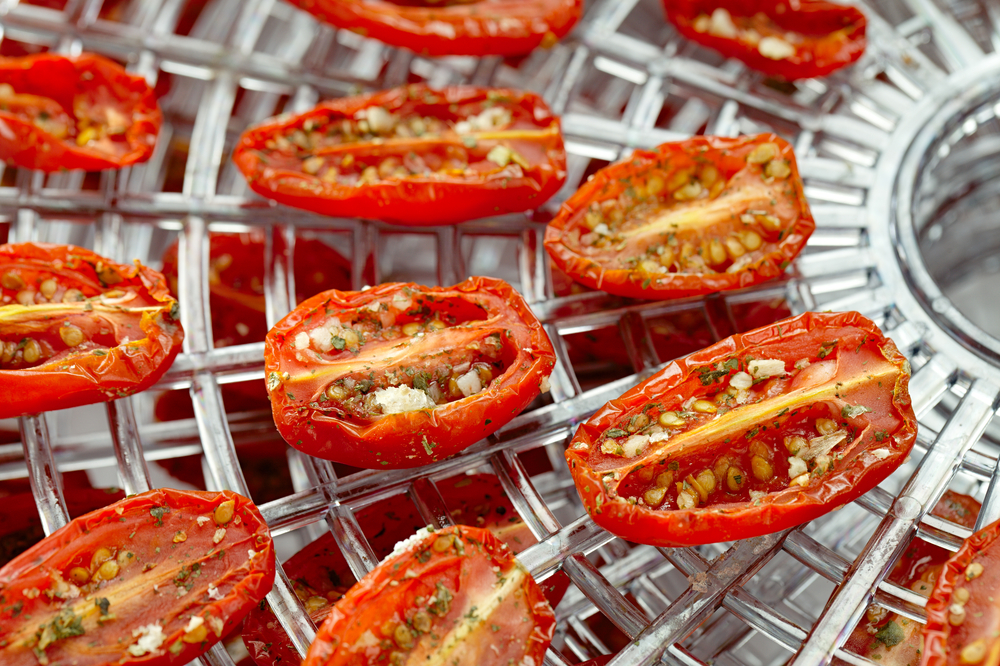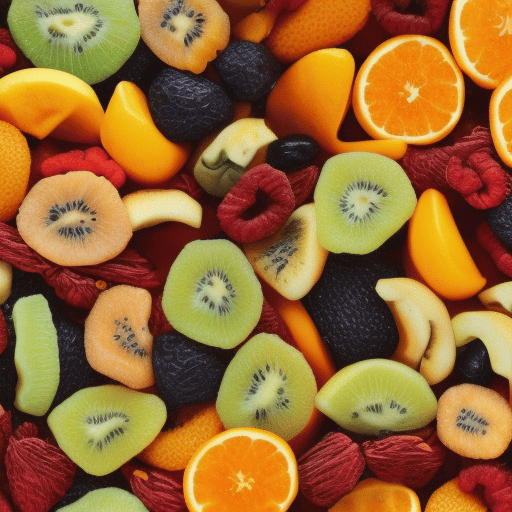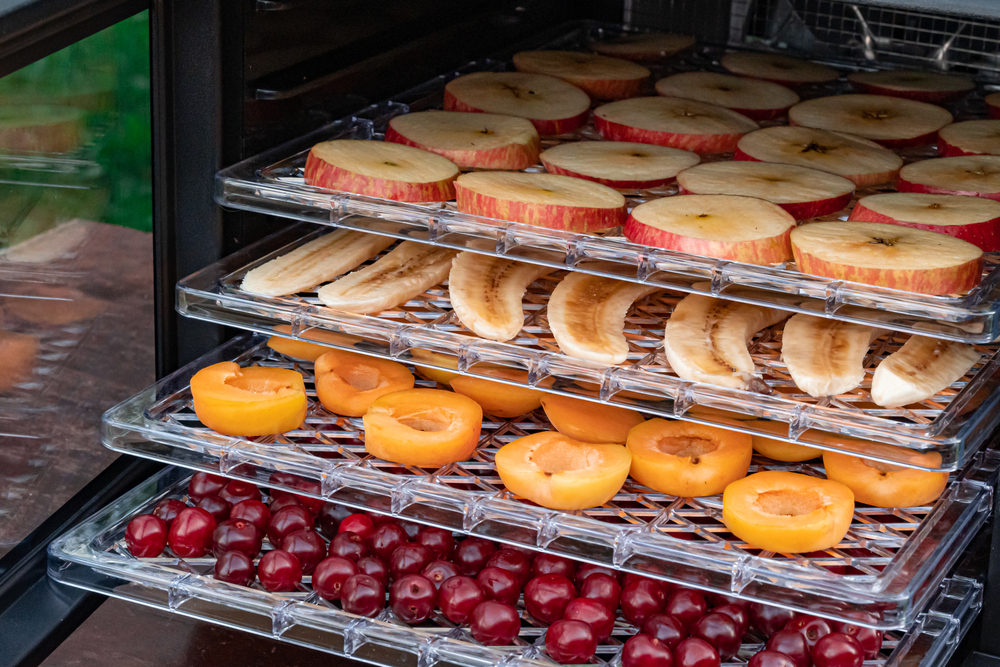Wanting to know “How does a dehydrator work?” is a common question for anyone who might have considered getting their dehydrator for the kitchen. Dehydrating food isn’t just a fun way to turn grapes into raisins. A food dehydrator can also improve the shelf life of your food by removing the moisture that bacteria and mould would need to grow.
Drying food with air circulation and heat helps you create all kinds of delicious dried fruits and vegetables for recipes. It’s also popular among raw food enthusiasts who want to get more of their delicious, whole produce into their diet in the form of snacks that won’t spoil as quickly.
So how exactly do food dehydrators work to create the dried food we love?
What Are the Components of a Food Dehydrator?
The electric dehydrators used for food dehydration today are a relatively new addition to the process of drying food. However, people have been using this process to prevent spoiling food for decades. Before the food dehydrator was invented, people used a range of manual methods for removing moisture from foods, such as drying foods in an oven or placing whole foods out in the sun.
Modern dehydrators are much faster and more effective at drying foods, and they can be the perfect solution for removing moisture from products as quickly as possible. The components of a food dehydrator can vary depending on the product you get. However, most will feature:
• A heating element: The heating element helps to use heat to evaporate moisture from within the food. This assists in the dehydration process when combined with air vents and fans.
• Air vents: Air vents and fans circulate air around the dehydrator to help remove moisture content. Depending on the heating and air circulating process, dehydration can take a very short amount of time or several hours.
• Rotating trays: The trays in the dehydrator are where you place your foods. Some have full removable and stackable trays, while other dehydrator machines can feature rigid box shelves or circular drying racks for meat.
When you place your food on the trays in your food dehydrator, the constant temperature combined with the air circulation and the moving trays helps to accelerate the drying process. The elements within the device all work together to release moisture from the vegetables and fruits in your machine and remove that moisture from the internal space. The air vents get rid of the moisture to ensure they’re not absorbed back into the food.
How Do Dehydrators Remove Moisture?

How does a dehydrator work? Whether you’re making trail mixes or dried fruits with your machine, the process of dehydration remains the same.
A dehydrator works by combining a specific temperature with the circulation of air to pull moisture from inside a product. Applying low temperatures to a product for an extended period of time, at the same time as you circulate and vent moist air, will gradually leave vegetables and fruits dehydrated.
You’ve probably noticed how many of the foods you bake in the oven on low heat are somewhat dehydrated when they’re finished cooking. The dehydrator machine follows the same principle.
The combination of air circulation and heat means that even though there’s less space for food in a dehydrator, there’s also less of a chance that moisture will build up and reabsorb into the food products. This means you can make all kinds of dried and dehydrated food items, from beef jerky to dried fruit, without having to use your entire oven.
Dehydrating foods can often require some trial and error. You might have to experiment with how much warm air you need to expose your food to before you get the perfect results. Dehydrating foods can often be a tricky process for beginners, as food dehydrators don’t always work the same way every time. You might need to keep a close eye on your dehydrated foods to determine when they’re ready.
What Temperature Does a Dehydrator Work At?
Now that you know the answer to “How does a food dehydrator work?” let’s find out how to make the most of your machine.
With a dehydrator, the temperature inside the machine is crucial to the success of the dehydration procedure. Depending on the device you choose, you might get an adjustable thermostat you can move to between 95 and 145 degrees Fahrenheit. The aim of making dried foods isn’t to cook the foods, so it’s important to stick to lower temperatures where possible.

Adding too much heat to the food reduces the chance of getting the right dehydrated results from fruits, vegetables, and meat. The kind of products you’re dehydrating and the amount of food you’re using will also impact the required temperature.
Higher temperatures are usually required for dehydrated meat, while the temperature you choose for fruit and vegetables will typically be lower. If you’re trying to dehydrate six trays of food, you’ll also need a higher temperature compared to using your kitchen appliance for a small amount of food in a smaller drying space. Your instructions should come with guidance on the best temperature to use for dehydrating various products. Remember, when using your machine, food dried at high heat is more likely to have an uneven drying finish.
Why Do People Use Food Dehydrators?
A food dehydrator can be an excellent way to dehydrate food you want to preserve. Food dehydration removes moisture from food, so there’s less of a risk it will grow mould or go bad. A food dehydrator can help with preserving beef jerky or dried fruit. A lot of people use their food dehydrators to create their own trail mixes with dried fruits and vegetables.
Dried fruits from a food dehydrator are an excellent addition to various meals too. You can add things like cherries, cranberries, pineapple, apples, and bananas to all kinds of cereals and granola mixes. Alternatively, you could bake them into muffins, bread, and cakes.
Food dehydrators aren’t just for fruit, either. Commonly dehydrated vegetables range from root vegetables to mushrooms and potatoes. You can dehydrate ingredients to add to stir-fries, soups, and stock mixes. Aside from offering an excellent form of food preservation, a dehydrator can also be a great way to create your snacks.
Food dehydration machines are excellent for getting more of the health benefits of various vegetables and fruits into your day with healthier snacks packed full of vitamins and minerals. You can also use your device to dehydrate meats for jerky. Common meats range from beef and pork to chicken and venison, often seasoned with herbs and spices.
Can Anyone Use a Dehydrator?
If you’re asking, “How does a dehydrator work?” you might think the process looks a little complicated at first glance. However, the truth is that most of the work happens behind the scenes, as your machine heats and rotates food gradually to remove the water content.
Once you’ve got the hang of using your dehydrator, you can use it for a wide range of different reasons, including things like making potpourri from the garden or mixing your own dried herbs and spices. Many people use these products regularly to stock up on their favourite snacks and dry ingredients to create healthier meals for the whole family.

